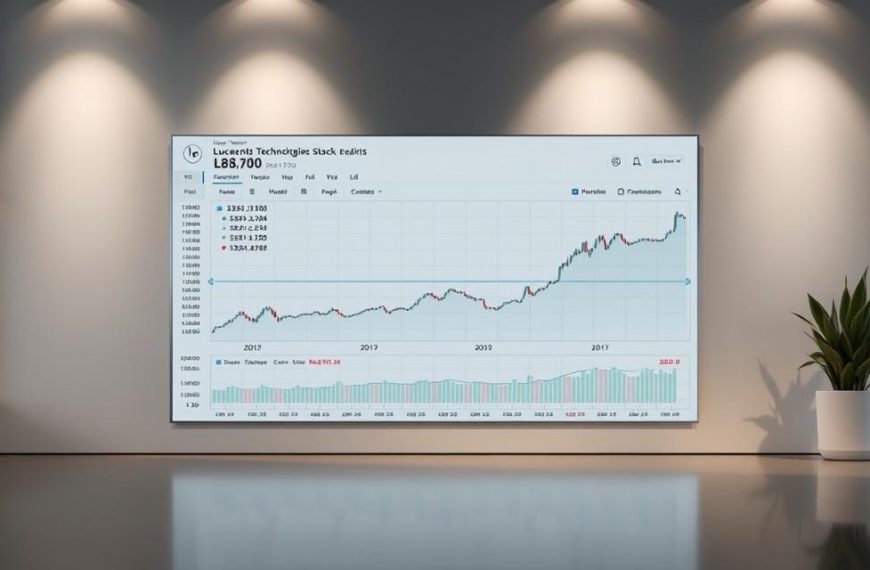Container technologies have transformed modern software development. They offer a new way to deploy and manage applications. These technologies allow developers to package apps with their entire runtime environment1.
Docker’s arrival in 2013 changed the software development landscape dramatically. Within a month of its test release, 10,000 developers were using Docker2. This marked a significant shift in the industry1.
Containerisation has become vital in modern software development. It offers unmatched flexibility and efficiency. By 2021, 96% of organisations were using or exploring Kubernetes and container technology2.
Docker dominates the containerised applications market with an 82.8% share1. Machine learning, software development, and AI industries have greatly benefited from containerisation software1.
Companies using targeted application modernisation strategies can boost annual revenue significantly. They can potentially increase it by 14%. These strategies can also reduce maintenance costs by up to 50%1.
However, container technologies face challenges, especially in security. 75% of respondents reported containers with high or critical vulnerabilities2. Organisations must address these issues to fully benefit from container technologies.
Understanding Container Technology Fundamentals
Container technology has revolutionised software deployment and management. It’s changed how developers build, ship, and run applications across various computing environments3.
Modern container technologies package applications with all their dependencies. This creates lightweight, portable solutions. Docker, launched in 2013, simplified application deployment as an open-source platform3.
Core Components of Containerisation
Containerisation relies on several critical components for efficient application packaging and execution:
- Container images (typically tens of MBs in size)
- Operating system kernels
- Runtime environments
- Isolation mechanisms
How Containers Interact with Operating Systems
Containers share the host machine’s kernel while maintaining strict process isolation. This unique interaction leads to higher server efficiencies. It also results in reduced infrastructure costs3.
Container Runtime Environment Basics
The container runtime environment manages the execution of containerised applications. Key developments have shaped this field.
- Docker’s contribution of runtime code to the Open Container Initiative in 20153
- Containerd project donation to Cloud Native Computing Foundation in 20173
- Establishment of standardised container runtime interfaces
Container runtime technologies enable rapid and consistent application deployment. Organisations can now deploy across different computing environments more efficiently4.
What Are Different Container Technologies
Container technologies have transformed software development and deployment. Docker leads the pack, adopted by tech giants like Microsoft, Amazon, and Oracle. Docker’s popularity stems from its ease of and widespread support.
The container ecosystem features several key technologies. Each has unique traits that set it apart from the others.
- Docker: A platform that simplifies container creation and management5
- Kubernetes: An advanced system automating container operations5
- LXC: Linux Containers providing foundational virtualization technology6
- CRI-O: A lightweight runtime designed to replace Docker in Kubernetes environments6
Newer technologies like rkt and Podman have expanded the container landscape. Podman boosts security by operating without a central daemon6.
Rkt was created to tackle early security issues in container technologies6. These innovations show the rapid progress in this field.
| Technology | Key Feature | Primary Use |
|---|---|---|
| Docker | Image-based containerisation | Application packaging |
| Kubernetes | Orchestration | Scaling containerised applications |
| Podman | Daemonless architecture | Secure container management |
These container technologies share a common aim. They boost software development efficiency, portability, and scalability. Their impact spans diverse computing environments5.
Advantages of Container Technologies in Modern Development
Container technologies have transformed software development, offering unmatched flexibility and efficiency. These solutions provide developers with tools to streamline application deployment across diverse computing environments7.
Organisations are adopting container technologies to enhance their development processes. The benefits span multiple critical areas of software engineering and infrastructure management.
Resource Utilisation and Efficiency
Containers improve resource efficiency by enabling smarter computing resource allocation. They can cut server memory use by up to 50% compared to traditional virtual machines7.
Development teams can achieve significant cost savings through efficient resource sharing. Server expenses can potentially be reduced by about 30%7.
- Faster application deployment times
- Reduced memory consumption
- Optimised computing resource allocation
Application Portability
Container benefits include exceptional application portability across different environments. Developers can deploy containerised applications seamlessly without changing code8.
This capability allows organisations to update legacy systems and move applications to cloud platforms easily8.
Containerisation transforms application development by providing unprecedented flexibility and scalability.
DevOps Integration
Container technologies greatly enhance DevOps practices. About 85% of enterprises now use Kubernetes for container management7.
The microservices architecture enabled by containers can boost development speed by up to 20%7.
| Container Advantage | Performance Impact |
|---|---|
| Resource Efficiency | 50% Less Memory Usage |
| Deployment Speed | Reduced to Seconds |
| Application Performance | 70% Improvement Reported |
Embracing container technologies leads to more agile, efficient, and scalable software development processes.
Container Orchestration and Management Solutions
Container orchestration is vital for modern software development. It transforms how organisations manage complex application infrastructures. Container orchestration platforms help businesses automate and scale their containerised applications efficiently9.
Kubernetes leads in container orchestration with high adoption rates. About 70% of developers now use container orchestration solutions. This highlights its importance in the tech world10.
The platform offers robust features for streamlined application deployment and management:
- Automated container scheduling
- Dynamic resource allocation
- Intelligent load balancing
- Self-healing capabilities
The container orchestration market shows impressive growth potential. It was valued at US$745.72 million in 2022. Experts predict it will grow by 26% over five years9.
By 2029, the market could reach an estimated US$1,084.79 billion. This growth shows rising demand for scalable container management solutions11.
Besides Kubernetes, technologies like Docker Swarm offer different orchestration approaches. These platforms provide key benefits for modern development teams, including:
- Enhanced application portability
- Reduced operational overhead
- Improved resource utilisation
Container orchestration tools are revolutionising software deployment. They allow organisations to manage complex containerised environments with unmatched efficiency. These solutions offer unprecedented reliability in application management10.
Security and Best Practices in Container Technologies
Container security is crucial in modern cloud infrastructure. The market is growing rapidly, with investments highlighting its importance. Organisations must adopt dynamic and proactive security strategies for container environments.
Security policies must address multiple vulnerabilities in containerised environments. A single container image flaw can impact every instance, expanding the attack surface. Security breaches can occur throughout the software development lifecycle12.
Effective container security requires a comprehensive approach. This includes scanning images before deployment and enforcing strict access controls. Tools like Snyk and Checkmarx are useful for vulnerability detection13.
Regular audits of container activities and configurations are vital. Monitoring tools help identify unusual behaviours in dynamic containerised workloads. These measures ensure robust security throughout the container ecosystem14.
Best practices for secure container deployment involve maintaining thin, short-lived containers. Implementing multi-factor authentication is also crucial. Continuously updating container runtimes and orchestration tools further enhances security12.
Integrating security throughout the container pipeline reduces potential risks. This approach protects cloud infrastructure from emerging cyber threats. Organisations can safeguard their containerised environments by following these best practices13.
FAQ
What exactly are containers in software development?
How do containers differ from traditional virtual machines?
Which container technologies are most popular in the industry?
What are the primary advantages of using containers?
How do container orchestration platforms work?
What security considerations are crucial for container deployments?
Can containers improve software development efficiency?
How do containers support microservices architecture?
What challenges might organisations face when adopting container technologies?
How do containers support cross-platform development?
Source Links
- https://www.ibm.com/think/topics/containers-examples
- https://www.techtarget.com/searchitoperations/feature/Dive-into-the-decades-long-history-of-container-technology
- https://www.docker.com/resources/what-container/
- https://www.alibabacloud.com/blog/introduction-to-container-technology-and-its-basic-principles_601759
- https://www.redhat.com/en/topics/containers
- https://k21academy.com/docker-kubernetes/what-are-containers/
- https://www.divio.com/blog/the-benefits-of-containerization-technology/
- https://aws.amazon.com/what-is/containerization/
- https://www.paloaltonetworks.com/cyberpedia/what-is-container-orchestration
- https://www.ibm.com/think/topics/container-orchestration
- https://www.digitalocean.com/resources/articles/what-is-container-management
- https://www.tigera.io/learn/guides/container-security-best-practices/
- https://www.wiz.io/academy/container-security-best-practices
- https://sysdig.com/learn-cloud-native/container-security-best-practices/
















